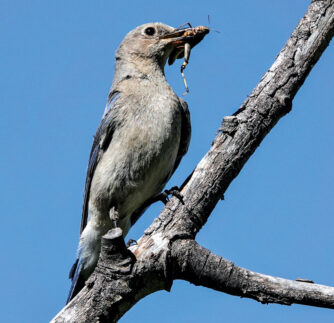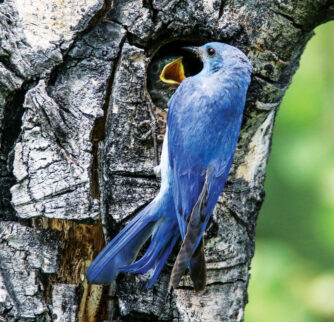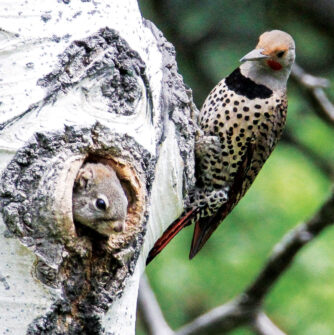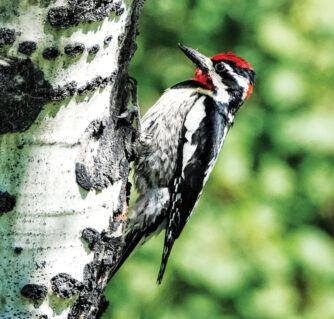
Figure 1

Figure 2

Figure 4
Keystone Species
In early July, I walked along the Mule Deer trail in Golden Gate Canyon State Park to see birds that prefer a higher elevation than Denver. Many birds are raising their young at this time of year in the tree hole nests of aspen trees. One easy way to find a tree hole nest is to look for birds with insects or caterpillars in their beaks and follow them as they return to the same tree over and over again, like this Mountain Bluebird with a grasshopper in its beak (figure 1).
Once the nest is located and the feeding activity is witnessed, one can truly appreciate the effort and work put in by the parents to care for the young. The Mountain Bluebird (feeding its young in figure 2) and the Red-naped Sapsucker (figure 3) are rarely seen at the lower elevation of Denver except during migration in spring and fall.
The Red-naped Sapsucker is both the architect and the construction crew that made these round cavities in the aspen trees. Woodpeckers, including flickers and sapsuckers, have the equipment to perform this task. The Red-naped Sapsucker is designated a keystone species because what it creates benefits other wildlife in the same habitat. The tree hole nest is shared among birds with lesser beaks that are incapable of constructing such cavities. In addition, the sapsucker makes holes in trees to allow the flow of sap on which it and other creatures feed. They also maintain the flow of sap continuously for the benefit of all.
Figure 4 shows a small mammal that has found its way into such a tree hole as a Northern Flicker looks on quizzically.

Figure 3



0 Comments